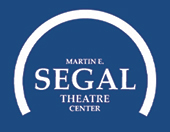“Ana, I am going to Mexico City, do you have any theatre recommendations?” In response to that common question from friends and colleagues–almost unconsciously–I answer: see what is going on at the University Theatre Center at the National Autonomous University of Mexico (UNAM).
While the next Segal Center World Theatre series is a reading from David Olguín’s play International Airport and a discussion with Mario Espinosa of trends in Mexican theatre today, I’d like to take this chance to bring UNAM into the conversation, which is the place both artists started their career and from where the country’s most innovative theatre is created. Founded in 1551, today UNAM is one of the largest public universities in Latin America. It operates as an autonomous institution: UNAM has the freedom to define its curriculum and to administer its budget without interference from the government. Academic freedom and independence at UNAM has had a strong ideological and political impact: in the university, in the city, and in the country. Not surprisingly, it is from this institution that some of the best theatre practitioners in Mexico come from.
Now, if we zoom out from UNAM and think of Mexico City itself, we realize that contemporary theatre in Mexico reflects the megalopolis’ radical multiplicity. There is a shift and I am very glad it is happening. Past generations of great Mexican playwrights–Rodolfo Usigli, Salvador Novo, Celestino Gorostiza–sought to create a realistic theatre that conveyed what is to be Mexican or a “Mexicandad.” Their modernist attempt to unify a diverse country into a homogeneous category is crumbling down while the many different voices come to the foreground. After a generation of theatre artists who sought to create a “Mexican” theatre, we now have a theatre that emerges from the many different identities, ethnicities, ideas, places, voices, and dreams that make up Mexico. Espinosa and Olguín belong to a generation that works with Mexico’s agglomeration of identities and places. There is a vision in today’s dramaturgy of a Mexico that explodes, expands, and multiplies–like Mexico City itself.
Ana Martínez
This entry was posted in Uncategorized. Bookmark the
permalink. Both comments and trackbacks are currently closed.








Contemporary Mexican Theatre: Mario Espinosa Ricalde with David Olguín
“Ana, I am going to Mexico City, do you have any theatre recommendations?” In response to that common question from friends and colleagues–almost unconsciously–I answer: see what is going on at the University Theatre Center at the National Autonomous University of Mexico (UNAM).
While the next Segal Center World Theatre series is a reading from David Olguín’s play International Airport and a discussion with Mario Espinosa of trends in Mexican theatre today, I’d like to take this chance to bring UNAM into the conversation, which is the place both artists started their career and from where the country’s most innovative theatre is created. Founded in 1551, today UNAM is one of the largest public universities in Latin America. It operates as an autonomous institution: UNAM has the freedom to define its curriculum and to administer its budget without interference from the government. Academic freedom and independence at UNAM has had a strong ideological and political impact: in the university, in the city, and in the country. Not surprisingly, it is from this institution that some of the best theatre practitioners in Mexico come from.
Now, if we zoom out from UNAM and think of Mexico City itself, we realize that contemporary theatre in Mexico reflects the megalopolis’ radical multiplicity. There is a shift and I am very glad it is happening. Past generations of great Mexican playwrights–Rodolfo Usigli, Salvador Novo, Celestino Gorostiza–sought to create a realistic theatre that conveyed what is to be Mexican or a “Mexicandad.” Their modernist attempt to unify a diverse country into a homogeneous category is crumbling down while the many different voices come to the foreground. After a generation of theatre artists who sought to create a “Mexican” theatre, we now have a theatre that emerges from the many different identities, ethnicities, ideas, places, voices, and dreams that make up Mexico. Espinosa and Olguín belong to a generation that works with Mexico’s agglomeration of identities and places. There is a vision in today’s dramaturgy of a Mexico that explodes, expands, and multiplies–like Mexico City itself.
Ana Martínez